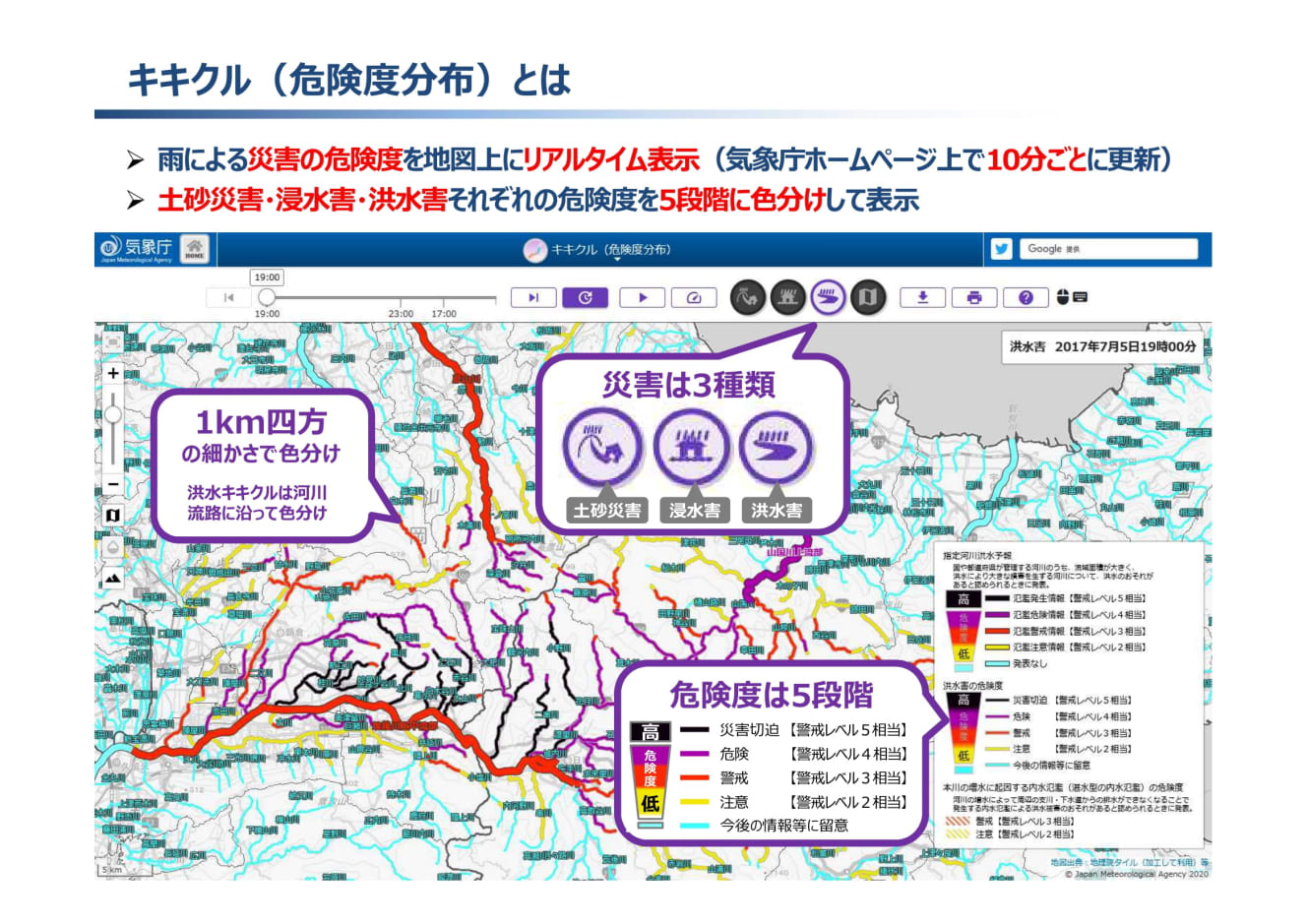(Kikkuru/Hazard Distribution) When it rains heavily, the map displays the danger level of disasters caused by the rain in real time. In addition, the “Information on the Danger of Flooding of Designated Rivers and Flood Forecasts” has changed its announcement criteria since June of this year, and is announced when the water level reaches a level that may cause flooding within three hours (excerpt from the Japan Meteorological Agency’s data). La Niña Phenomenon x Double Punch of Pacific High and Tibetan High. Great Potential for Record Breaking But it shouldn’t be all bad. The early end of the rainy season had caused concerns about water shortages, but Typhoon No. 4 may have resolved these concerns in many places. “The Hayamaura Dam in Kochi Prefecture received more than 100 mm of rainfall as a result of Typhoon No. 4, and the restrictions on water intake were lifted. However, the Asahikawa River system in Okayama Prefecture is still under primary water withdrawal restrictions due to the low rainfall in the basin. The flow of water caused by the typhoon is temporary, so if it doesn’t rain for a while, the water withdrawal restrictions will start soon.” 2010 and 2018 were also hot. In any case, “hot” was chosen as this year’s Kanji character for 2010, and “disaster-grade heat” was even selected as one of the top ten new words and phrases for 2018. In 2010, which had the highest average summer (June-August) temperature in the past 113 years, the La Niña phenomenon was thought to have contributed to the heat, as was the case this year, and in 2018, the temperature increased as the Pacific High and Tibetan High overhung near Japan. On July 23, a maximum temperature of 41.1°C was recorded in Kumagaya, Saitama Prefecture, and more than 40°C was recorded in Hokuriku for the first time in observation history. This year’s double whammy of La Niña and the Pacific and Tibetan highs could further break 2018’s record. Of concern is the impact on crops: in 2010, the heat wave delayed the growth of vegetables, and according to a retail price survey by the Ministry of Agriculture, Forestry and Fisheries, tomatoes and green onions were more than 40% higher than normal, eggplant was about 30% higher, and lettuce and potatoes were about 20% higher than normal. In addition, scallops in Mutsu Bay, Aomori Prefecture, and oysters in Atsukishi, Hokkaido, died in large numbers. At Toyama City Family Park, five of 13 Humboldt penguins in captivity died of dehydration. Pig farmers are already complaining this year that their pigs have lost their appetite due to the heat and are not gaining weight. Electricity is also a concern. Records were broken by various power companies, including Tokyo Electric Power Company’s maximum hourly power consumption of 59.99 million kilowatts on July 23, 2010. Even if this is not the case, what will happen if it gets any hotter now that prices are rising and people are being told to save electricity due to power shortages? All we can do is pray that we can make it through the summer safely. Sayaka Ikeda is from Hiroshima Prefecture and became a certified meteorologist in 2015. She has appeared on “Asaichi” (NHK Sogo), “Jane Sue: Life is Dance,” “Tamamusubi,” “Ogigami Chiki Session,” “5 O’clock News, Weather Report,” “Takayuki Hasumi: Matomete! Saturday” and “Saturday Wide Radio TOKYO Nights’ Chaki-Chaki-Daihoso” (TBS Radio Tuesdays and Saturdays), providing weather information.
